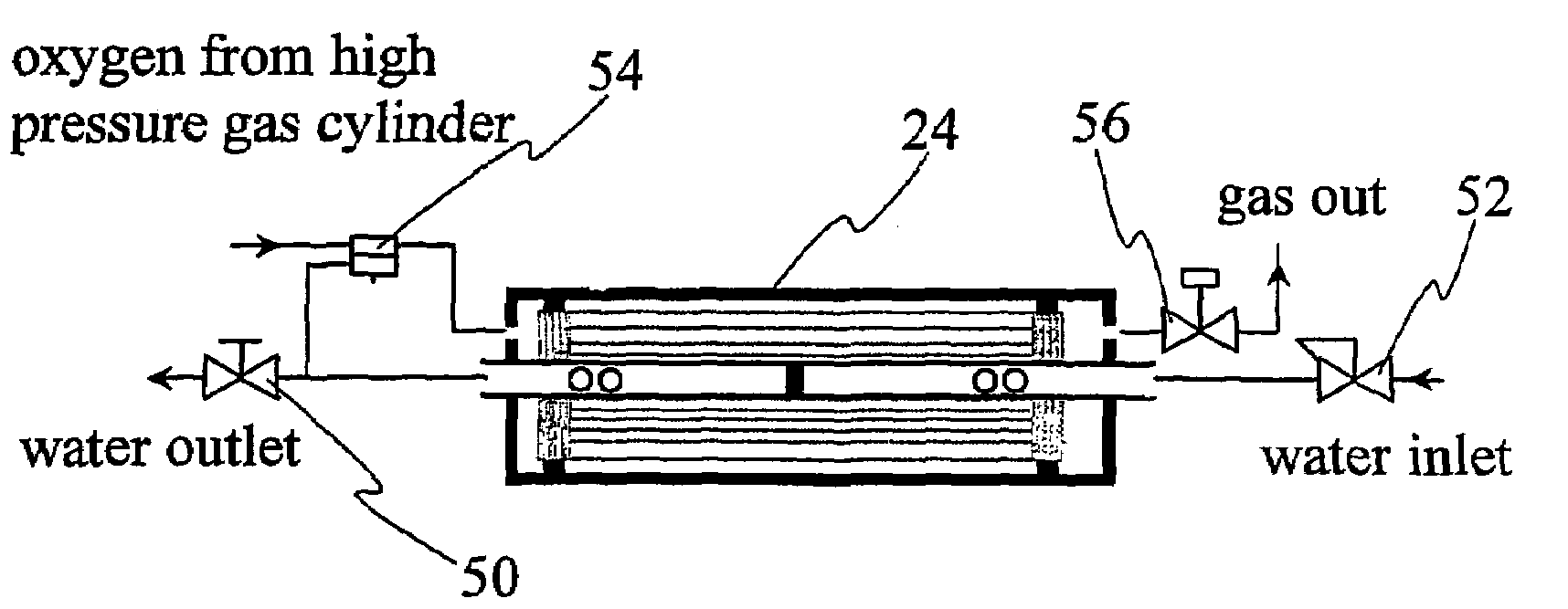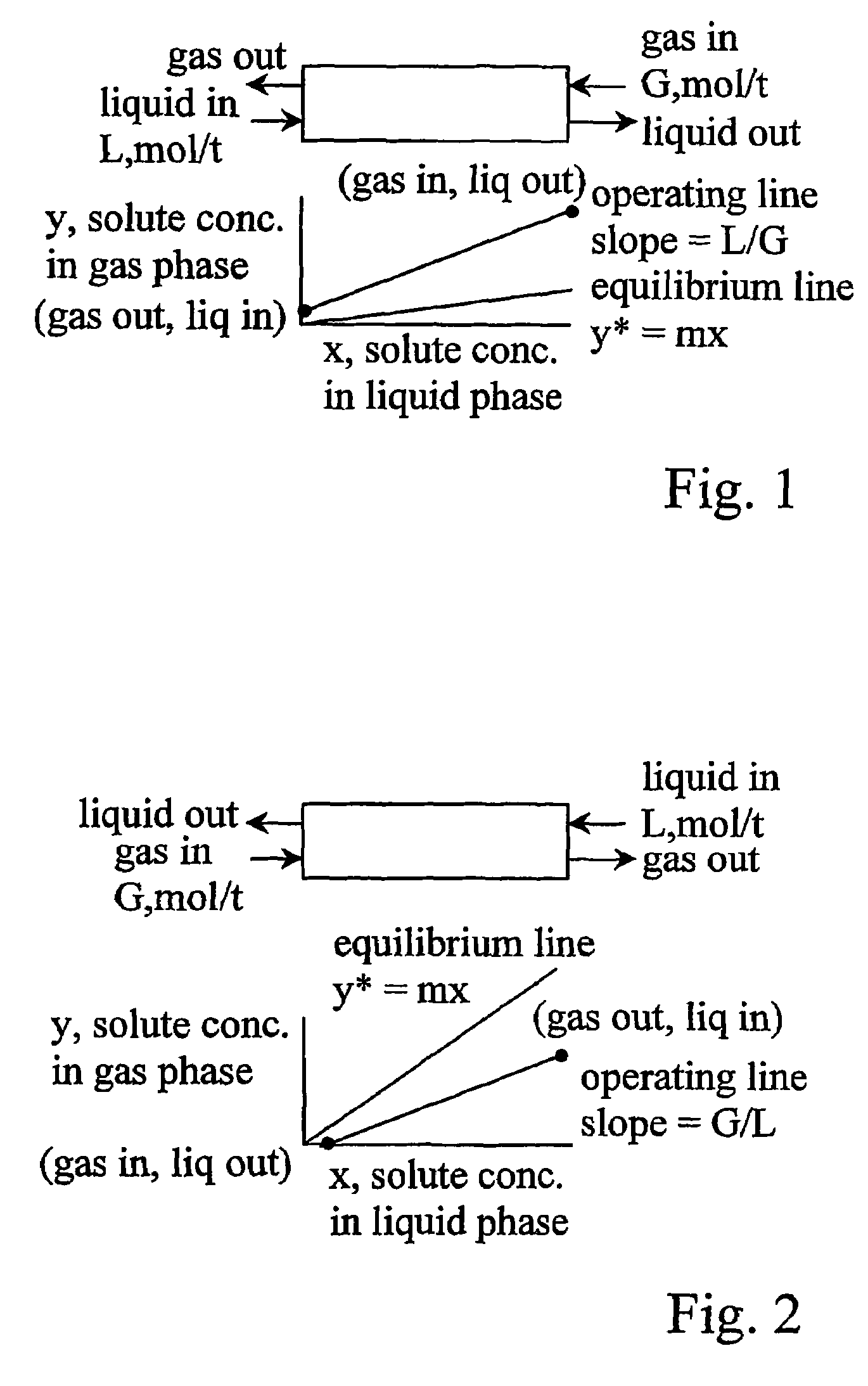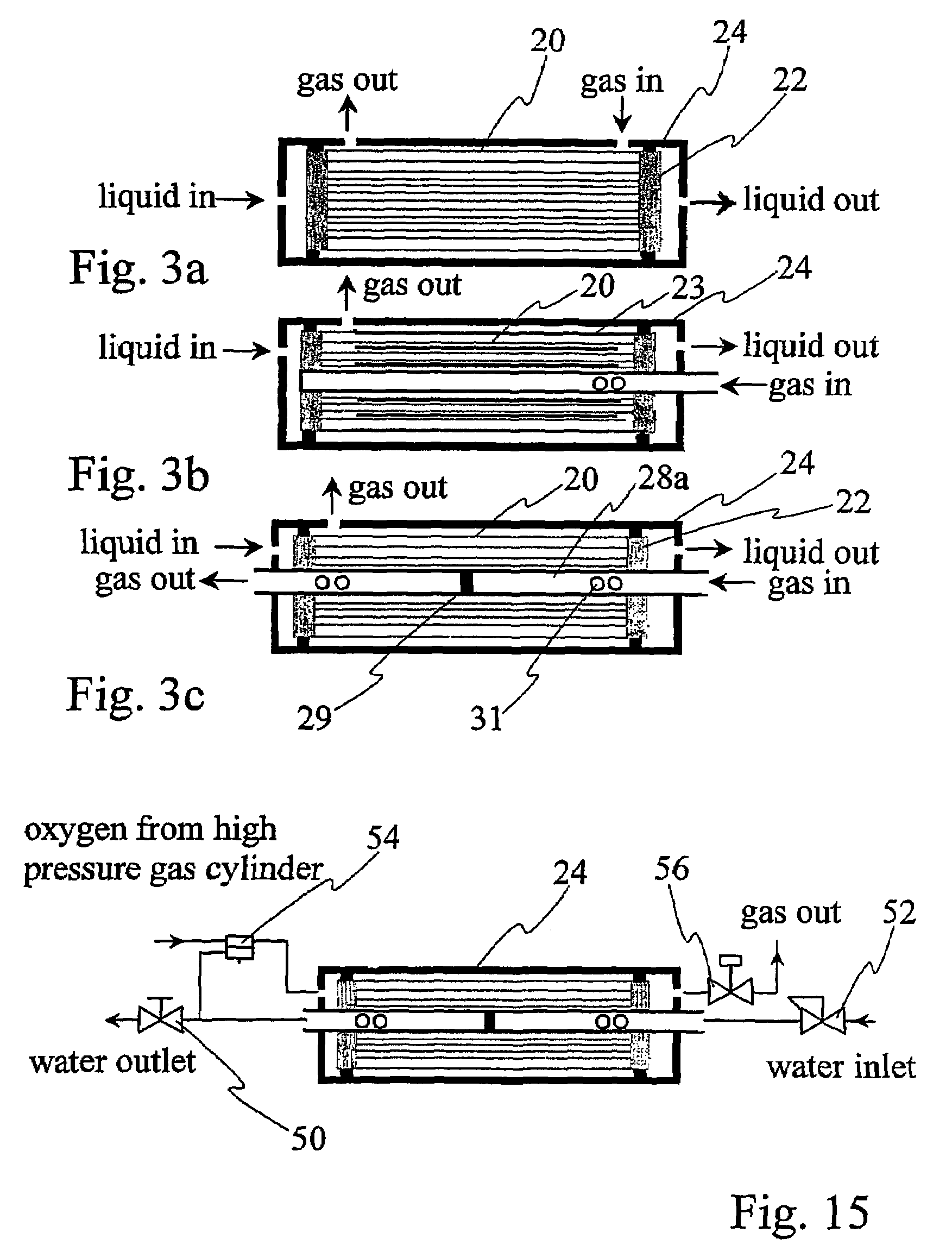Controlled atmosphere gas infusion
a gas infusion and controlled technology, applied in the direction of carburettors, lighting and heating apparatus, mixing methods, etc., can solve the problems of affecting fish, affecting the effect of nitrogen to oxygen ratio, and limitations, etc., and achieve the effect of lowering the total dissolved gas pressure(tg) and lowering the dissolved gas conten
- Summary
- Abstract
- Description
- Claims
- Application Information
AI Technical Summary
Benefits of technology
Problems solved by technology
Method used
Image
Examples
example 1
[0036]If, for example, the object of a process was to increase the dissolved oxygen content of water (aquaculture and hydroponics are just two applications) by using pure oxygen then it would preferable for that process to utilize as much of the oxygen as possible. with little wastage. Conversely, if it was desired to remove gases such as nitrogen and carbon dioxide from water, using oxygen, then it is obvious (from FIG. 1, the stripping diagram, that the larger the G / L ratio, the greater the distance between the equilibrium line and the operating line, ie. the greater the driving force for the gas transfer) that more oxygen would be better. Therefore, it is also obvious that for both of these operations to be carried out efficiently / economically, the ‘device’ must be designed and constructed properly. Three schematic illustrations of such devices are shown in FIG. 3.
[0037]FIG. 3 shows three different embodiments of countercurrent gas / liquid flow devices according to the invention, ...
example 2
[0047]The following is a description of the tests that were performed and the modules on which they were performed:
[0048]For comparison purposes, tests were run on a prior art membrane module used in our prior U.S. application Ser. No. 09 / 307,423 (see FIG. 8) which employs cross-current gas / liquid flow paths (FIG. 8), and a membrane module according to the invention illustrated in FIG. 9 adapted for countercurrent gas / liquid flow paths. Note that the FIG. 9 and FIG. 3C modules are identical except for the reversal of the liquid and gas flow paths and the exclusion of the exterior bundle shell side outlet.
[0049]Each module consisted of 6400 microporous hydrophobic hollow fibres 20, potted in epoxy tubesheets 22 and inserted into a pressure case 24. Appropriate ‘O-rings’26 needed for sealing the gas from the liquid are shown. The fibres were obtained from Mitsubishi Rayon Corp. and were of the type 540T (polyethylene), having approximately 75% porosity. Other microporous hydrophobic f...
example 3
[0059]The following is another mode of operation which those skilled in the art will recognize has merit, in an aquaculture operation. These numbers are generated by a model which is based on that used in our previous U.S. application Ser. No. 09 / 307,423, as well as the results presented in FIGS. 12-14.
[0060]
[0061]In the above illustrated scheme, a device such as that described in example 2 is fed water exiting a tank containing fish, using a pump. The water exiting the device is recombined with make-up water entering the operation and fed to the tank. Depending on the respiration rate of the fish (oxygen uptake rate) and the amount of fish present in the tank, as well as other variables shown in BOLD print, the ‘atmospheric’ conditions in the tank will reach a steady state. Proper choice of operating variables will allow the steady state ‘atmospheric’ condition of the tank to be beneficial to the health / growth rate, for example, of the fish.
[0062]It will be appreciated by those ski...
PUM
| Property | Measurement | Unit |
|---|---|---|
| partial pressures | aaaaa | aaaaa |
| pressure | aaaaa | aaaaa |
| pressure | aaaaa | aaaaa |
Abstract
Description
Claims
Application Information
 Login to View More
Login to View More - R&D
- Intellectual Property
- Life Sciences
- Materials
- Tech Scout
- Unparalleled Data Quality
- Higher Quality Content
- 60% Fewer Hallucinations
Browse by: Latest US Patents, China's latest patents, Technical Efficacy Thesaurus, Application Domain, Technology Topic, Popular Technical Reports.
© 2025 PatSnap. All rights reserved.Legal|Privacy policy|Modern Slavery Act Transparency Statement|Sitemap|About US| Contact US: help@patsnap.com



